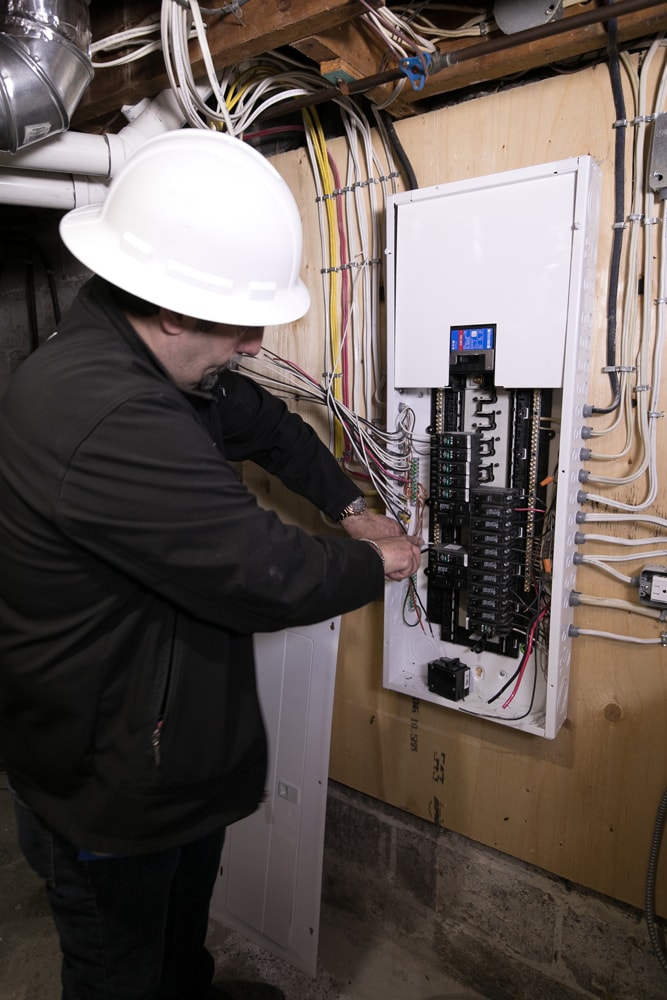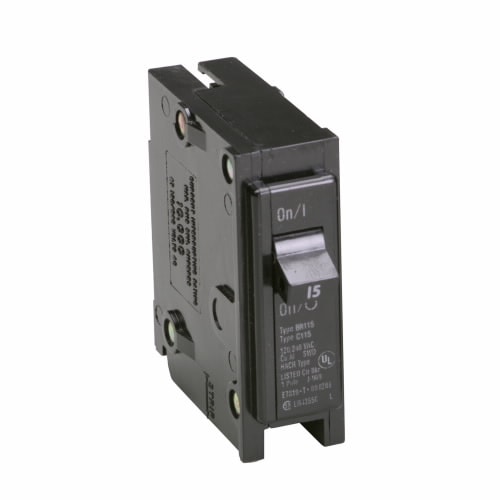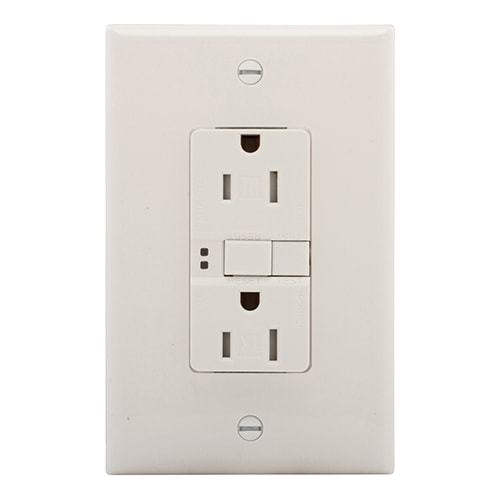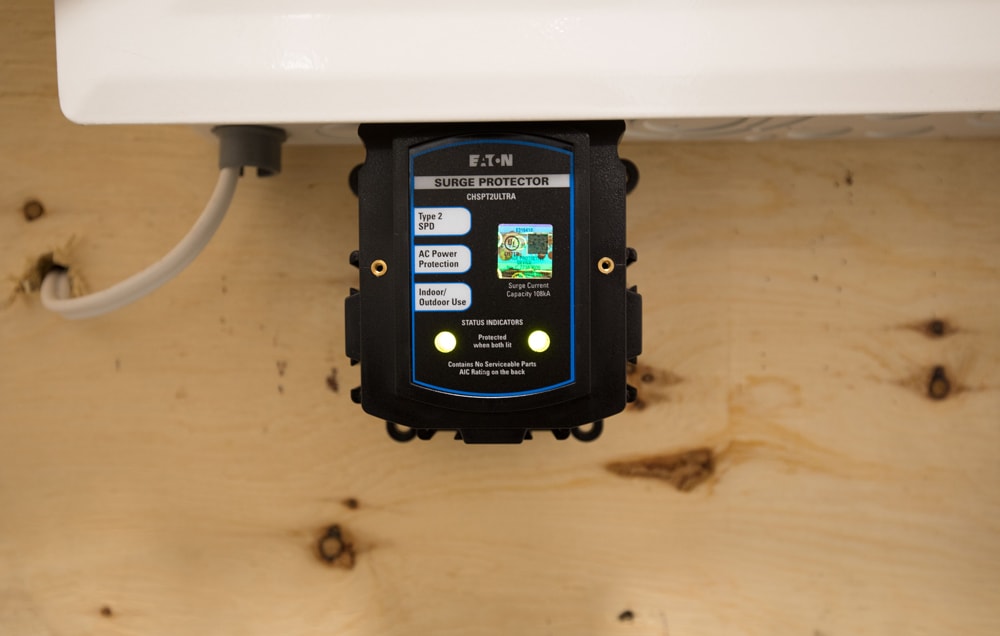When it’s time to replace your HVAC system, you have several options, each with its own benefits. Choosing the right HVAC system depends on your home’s size, climate, energy needs,...

Home Electrical Basics – How A Home Electrical System Works
By Mike Holmes
Mike’s Advice / Home Safety & Maintenance
Monday, May 24th, 2021 @ 11:34pm
Your electrical system is a complex part of your home’s structure and is not something that should be a DIY project. You don’t want to wind up on my show for all the wrong reasons, do you? Here are some electric basics every homeowner should know.
Always hire a licensed electrical contractor for any electrical work you’re doing in the house. Why? Because they are the experts and can help make sure everything is done safely, to code, and know to pull the needed permits. This saves you from making expensive repairs down the road, having to stop work due to lack of permits, or worse, dealing with an electrical fire.
Even though you won’t be doing the work yourself, you should still need to understand the basics of the electrical systems in your house.
Let’s start with the electric basics:
- What is an electrical circuit?
- What technology helps to keep my home safe?
- Should I install a surge protector in my home?
#1 – What Is An Electrical Circuit?
An electrical circuit is any wired component in your house that consumes electricity starting from your electrical panel. Typically, the electrical panel (also known as loadcenter or breaker box) is located in the basement, garage, utility room, or the outside of your home.
Each electrical circuit is wired into a circuit breaker. This circuit breaker protects the wire that delivers the electricity from being damaged.

Each electrical circuit has a different job in the home, depending on which area it’s serving.
During the design process of a home, the wires of an electrical circuit should be carefully chosen to fit the application as well as the room they will be supplying power to.
TIP:
When taking on a new renovation and upgrading your electrical system, it is generally a good idea to oversize an electrical service to better prepare you for possible future expansions down the road.
Living room circuits may have smaller wires to carry the smaller amount of electricity required. In contrast, electric clothes dryers require a larger wire to safely deliver the larger amount of electricity flowing through it.

This circuit breaker is “rated” to 15 amperes of electrical current to help protect the smaller size wire from overheating or even melting. It is designed to monitor the circuit and shut off power when this occurs.
20 years ago our homes weren’t designed for the same electrical capacity as our homes need today. Now we have more smart devices and appliances that require extra power and each time an appliance or device is added to an electrical circuit it increases the resistance or load on the entire circuit.
It is important to make sure your home has the correct system in place to handle this electrical load. A licensed electrician can tell you what your home needs.
RESOURCE:
To find a licensed electrician near you visit: myhome.eaton.com or if you are in Ontario, Canada visit findacontractor.esasafe.com
#2 What Technology Helps Keep My Home and My Electrical System Safe?
There are governing bodies that develop building codes to dictate how a house is built and what is installed to ensure the safety of homeowners. In addition, the National Electrical Code (US) and the Canadian Electrical Code focus on the safety of electrical installations.

As per code, electrical systems must have a breaker installed in order to protect homeowners from potential fire hazards caused.
There are many different types of breakers installed in our loadcenter or breakerbox that are all designed for electrical safety.
Main breaker – This device provides the means for shutting down power to your entire home. This breaker also incorporates thermal magnetic technology.
This technology uses a bimetallic strip consisting of two dissimilar metals bonded together. The bimetallic strip is set to trip the breaker based on a predetermined temperature. This temperature is measured based on the heat generated in the system due to current flow, and the ability to transfer that heat to the bimetal to trip.
Thermal Magnetic Breakers – These devices are designed to protect the wiring in the home and trip when unsafe thermal conditions are met. Designed to replace fuses, these devices allow homeowners to simply reset a circuit instead of purchasing a new fuse.
Ground-Fault Circuit-Interrupter (GFCI) – This technology measures the amount of electricity flowing from point A to point B in an electrical circuit. If there is an imbalance, it is assumed that electricity has left the circuit and has created an unsafe condition, and that is when GFCI protection is needed.
Often, this unsafe condition will involve water which could result in electric shock.

I recommend installing GFCI outlets that can shut off the power to the electrical outlet as soon as an electrical fault is detected.
Arc-Fault Circuit-Interrupter (AFCI) – AFCI breakers monitor the electrical circuit for signs of damaged wiring. Damaged wiring can lead to arcing which is when electricity travels through open-air back into the circuit again.
Arcing is one of the leading causes of residential fires, so AFCI technology will trip the arcing circuit to identify the problem for the homeowner.
DID YOU KNOW?
Electrical currents create waste heat and this heat causes electrical wiring to expand and contract over time. Eventually, it can loosen the connection and create an arc. When this happens the likeliness of a potential electrical fire is huge.
Read more about protecting your homes from electrical fires.
Dual Function/Dual Purpose (AF/GF) – Dual Function/Dual Purpose devices are circuit breakers or receptacle outlets that provide both GFCI and AFCI technology.
Remember, GFCI and AFCI are two systems that protect against different hazard risks in your home. The Dual Function/Dual Purpose devices can help protect against both of these potential electrical hazards in one device.
RELATED:
#3 What Is An Electrical Surge & Should I Install Surge Protection In My Home?
Many times an electrical surge is something we as homeowners can’t prevent. These surges can be caused by the utility company, the lighting system in your home, or other electronics that create brief spikes in your electrical system.
It doesn’t have to happen all at once, a series of small surges over time are enough to permanently damage your electronics.
These days we have thousands of dollars worth of home appliances and electronics in our homes including our cell phones, tablets, and televisions. Think about the cost of replacing all of these items at once because a surge took them out. It happened to me before and I lost everything, including a new stereo.
You can easily protect all of your electronics from the damaging effects of power surges by installing surge suppressors or protectors.

Surge protection installed on your loadcenter or breaker box provides protection right at the electrical source.
It’s simple, circuit breaker technology keeps us safe in our homes. Manufacturers like Eaton are always engineering innovative products with safety in mind because really it should be everyone’s priority.
RELATED:
Find out more information on Eaton product solutions and how they can help keep you safe.
Electric Basics Definitions:
- Voltage — the pressure that pushes electrical charges.
- Current — the flow of electric charge, measured in amperage.
- Amperage —the amount of electricity moving through electrical wiring.
- Load — the resistance to the flow of electrical charges; may also refer to the power an electric device draws from a circuit, which would be measured in watts.
READ NEXT:







